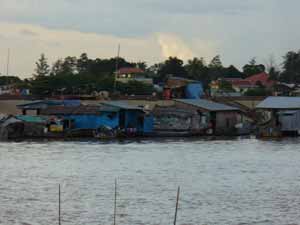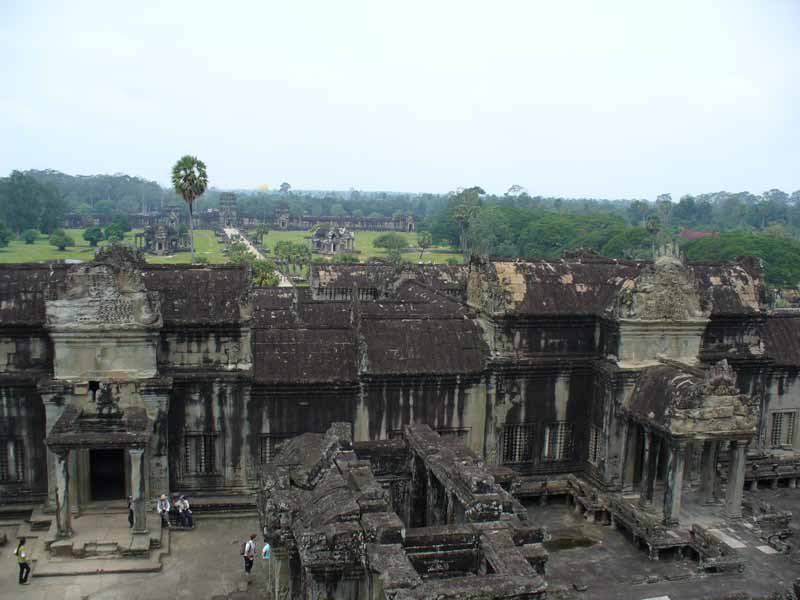Cambodia
By Kristin Trapp

Cambodia’s
lack of urbanism was a
lot easier to see than I had imagined it would be.
As I was walking through the dirt streets of Cambodia
I
quickly realized there was not going to be any markings or buildings
that
showed any sign of transnational or vernacular urbanism.
To my utter shock and amazement there was not
even a McDonalds. I then decided to look
a little closer at some of the dimensions of the cultural flow
including
ethnoscapes, mediascapes, and finanscapes most of them were
non-existent.
Ethnoscapes
are the ways tourists, immigrants, refugees and guest workers move
about a
city. Observing this was a little
challenging
because there were not that many tourists in most of the cities, but at
the more
popular temples there were bus loads of foreigners and tourists. The population however consisted mostly of
native Cambodians and I did not notice any other immigrants or refugees. To travel as a tourist I felt it was
relatively easy in some areas but not so easy in others.
The tourist destinations were covered with
people that spoke English, the only problem was they were only
interested in
selling their merchandise. Outside of
the tourist attractions it was still fairly easy to get around even
though most
natives did not speak any English. Still
somewhat intrigued I looked to another dimension, for instance
mediascapes.
Mediascapes
are the worldwide distribution of information through newspapers,
magazines, TV
program and films. The best explaination
of this is seen in article written by Elizabeth F. Vann “The Limits of
Authenticity in Vietnamese Consumer Markets.” The
article mainly discusses the reasons that trade with Vietnam is not
widely
accepted in many countries due to the amount of counterfeit. This was slightly harder to observe since
there were not that many TVs, newspapers and magazines.
The only TVs I saw were in the hotels and
they were in English, the newspapers were much easier to find because
they were
on most street corners but the only magazines that I saw were at the
airport
and they were about $7-$10 US dollars. The
mediascapes for Cambodia
is definitely not a world wide distribution of information. This brought me to my last dimension,
finanscapes.
Finanscapes
are the global capital flow. Cambodia’s
cities do not have a global capital flow. The
tallest building in all of Cambodia is only fifteen
stories
high. The majority of the houses do not
have air-conditioning and some of them do not even have indoor plumbing. The streets were not paved and most of the
side walk seemed to be paved with remnant pieces of concrete. Cows were allowed to free graze, stray dogs
ran rampant through the streets, definitely not the signs of and global
city. Cambodia was much different
from
any other countries that I have ever visited. The
most shocking observation I made was that there were
“killing fields”
in the middle of cities; some of them still had live land mines in them. Nothing but the hotels appeared to be new and
everything felt dirty and dingy.
Cambodia
was a very
humbling place to visit. The lack of the
basic amenities that home has to offer were greatly missed. Not being able to drink the water, worry
about diseases and every little bug bite was something that I am not
accustomed
to. The history that Cambodia has it
heartbreaking and
the lack of resources for basic supplies was very troubling. The governments control of technology makes
improving oneself difficult and if it is not the lack of restrictions
then it
is a lack of resources. I definitely had
an eye opening experience and upon my departure I missed home in a way
I never
thought possible. 
|


